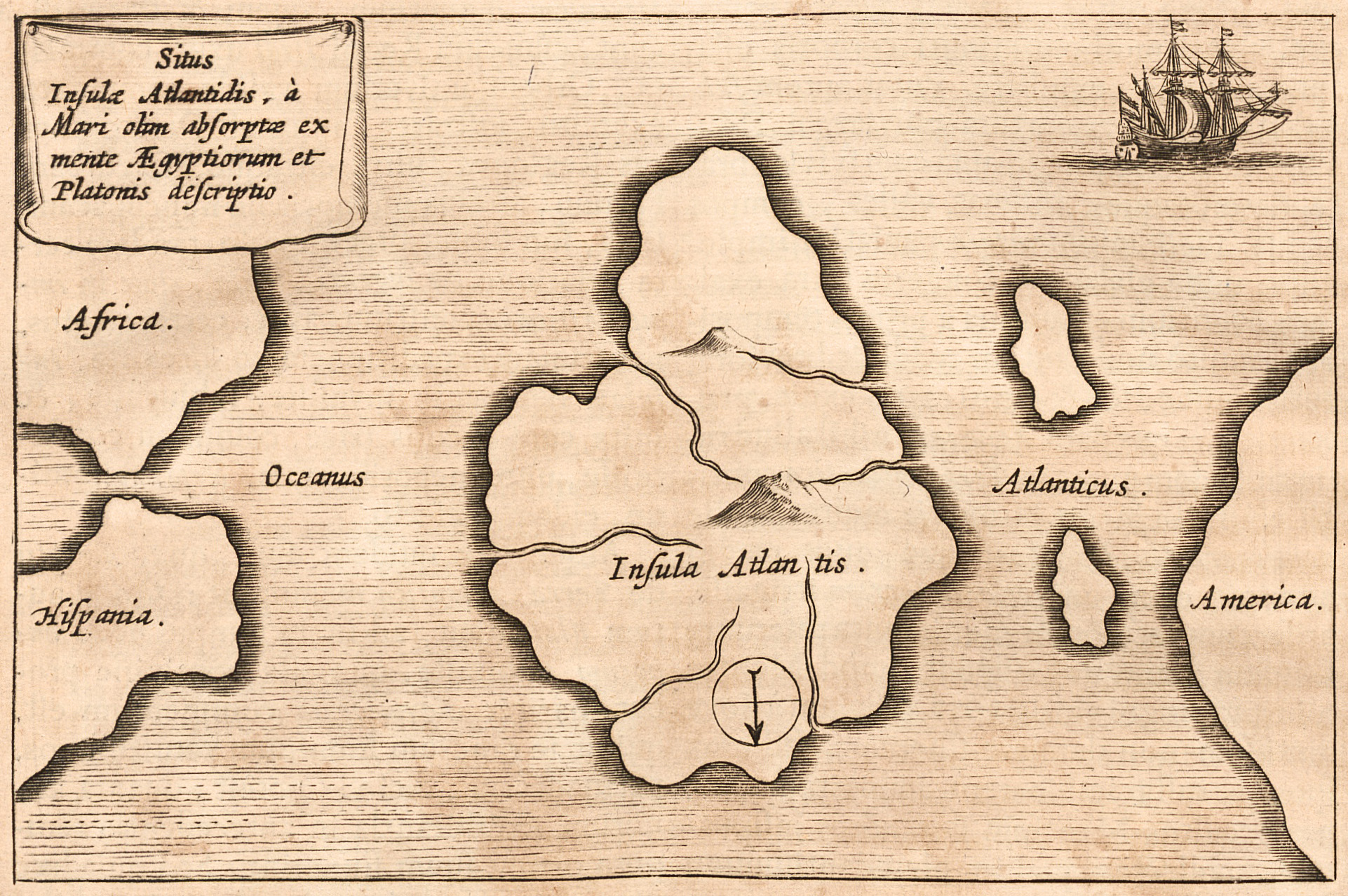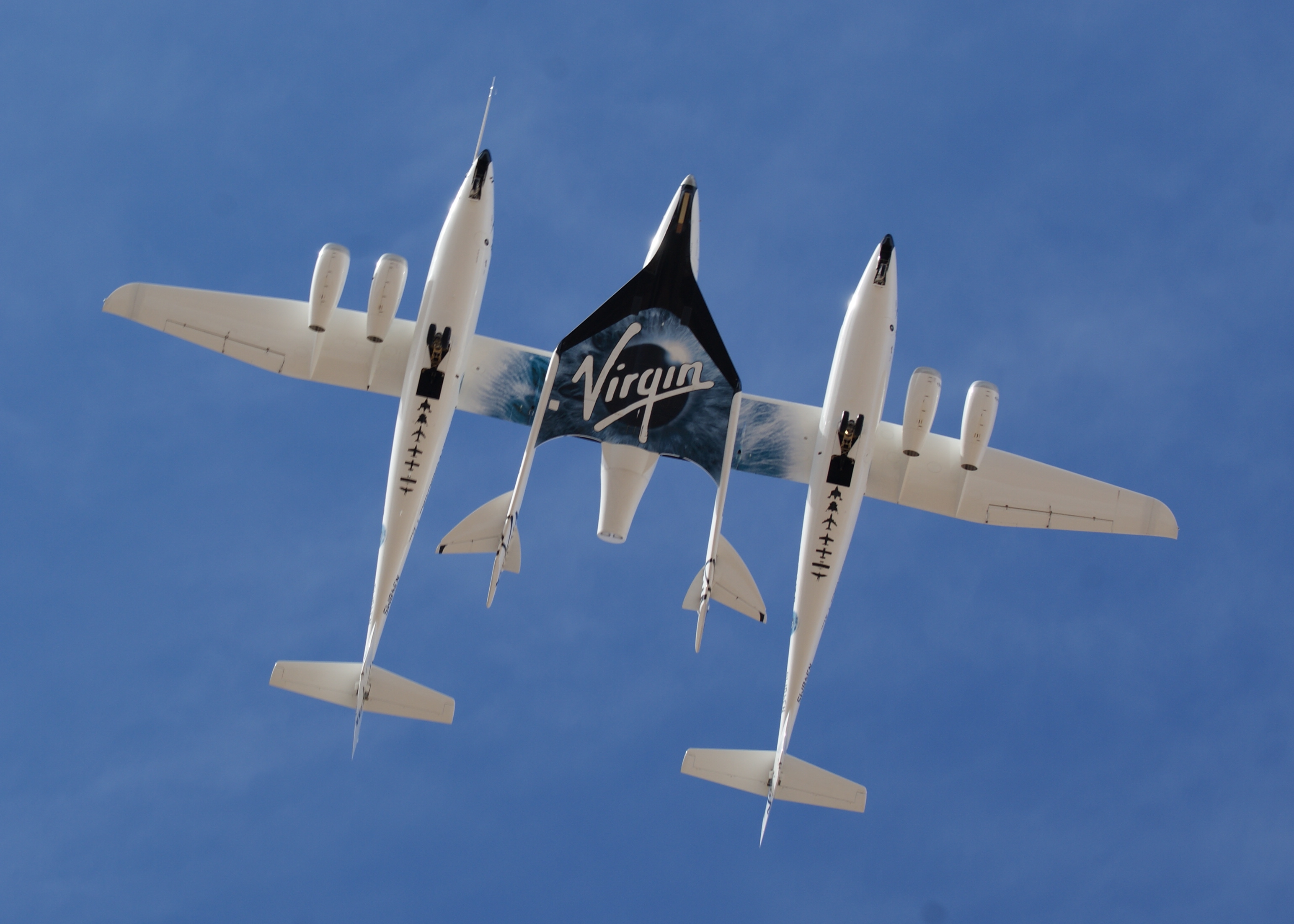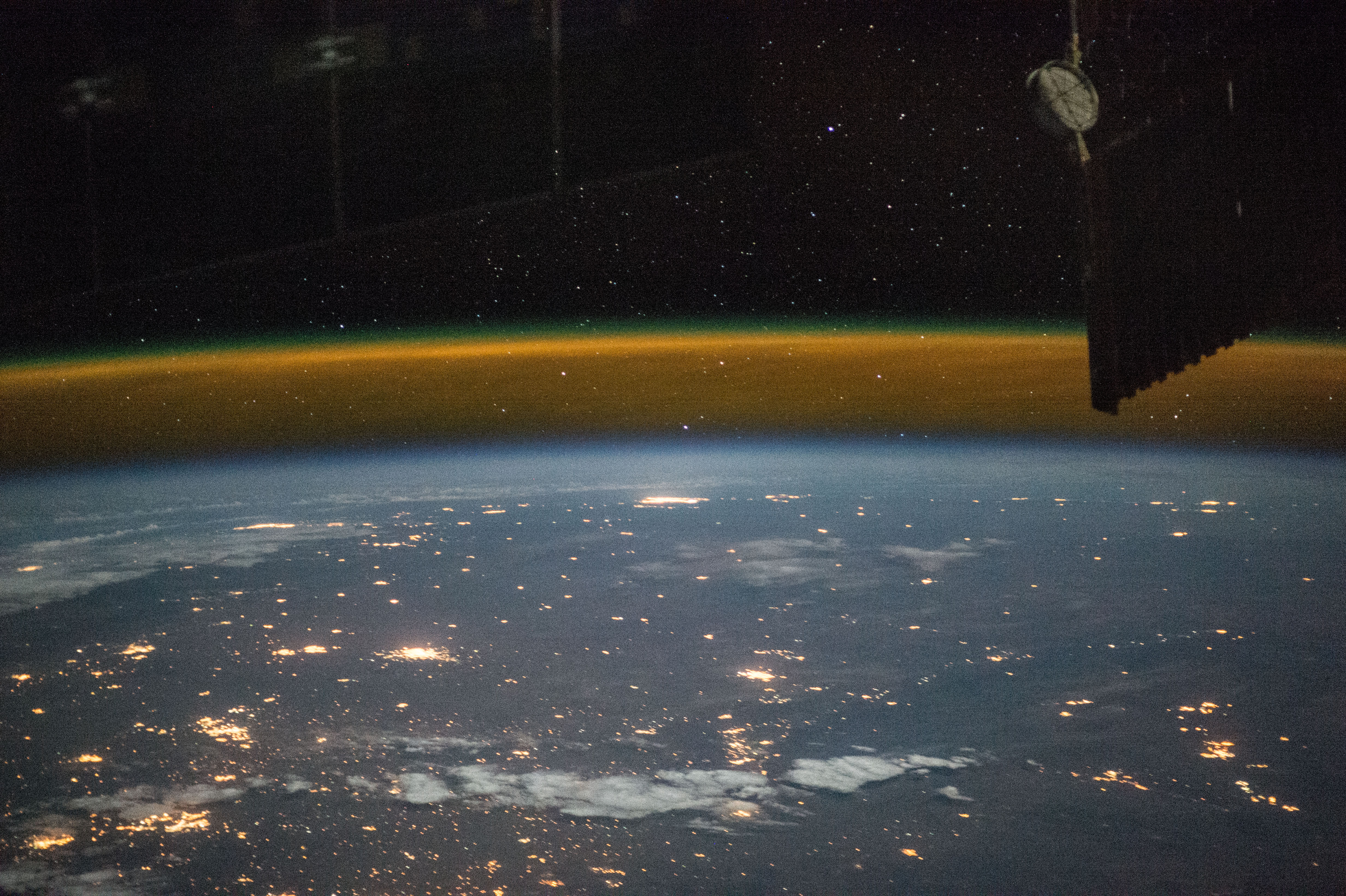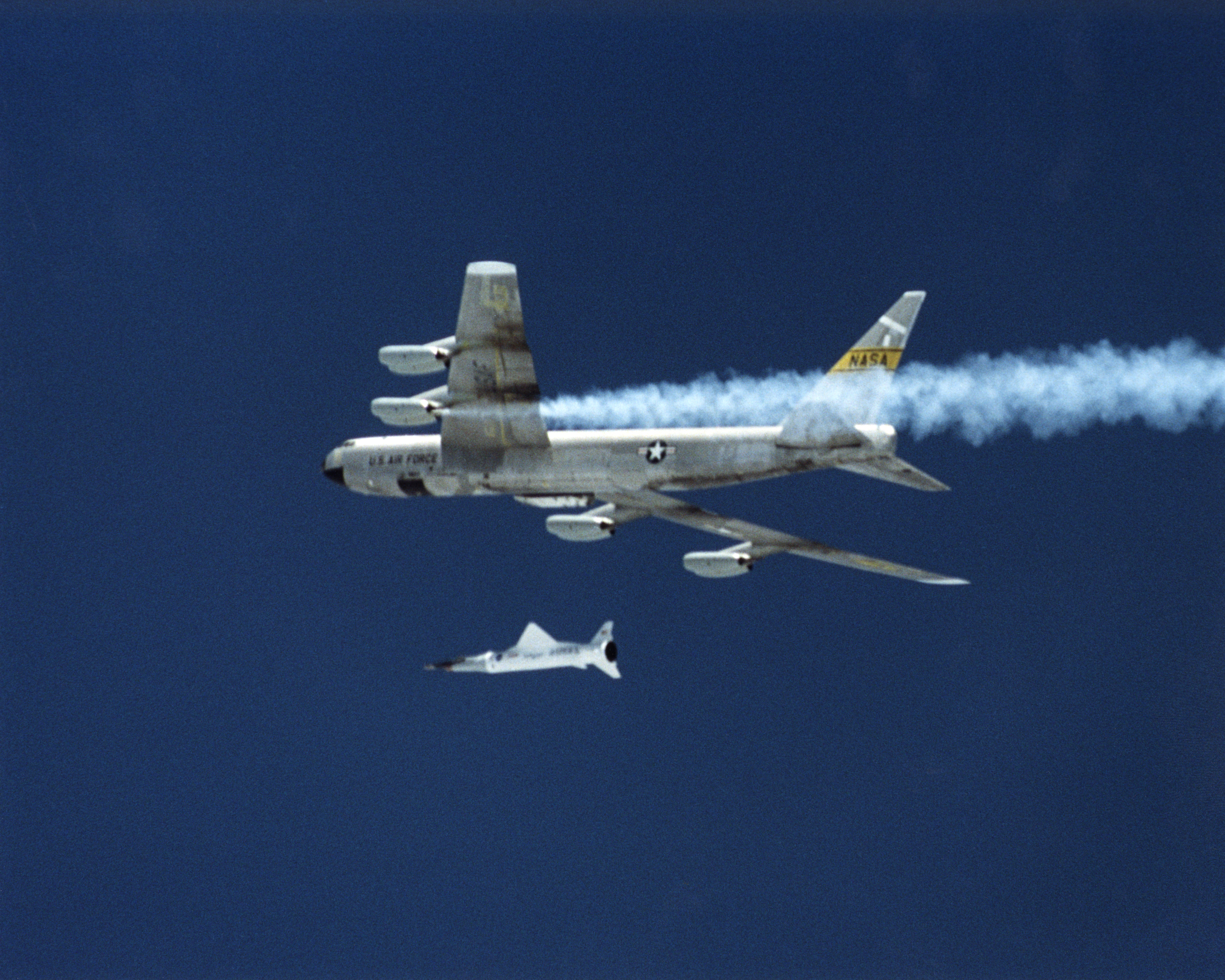|
Space Plane
A spaceplane is a vehicle that can fly and glide as an aircraft in Earth's atmosphere and function as a spacecraft in outer space. To do so, spaceplanes must incorporate features of both aircraft and spacecraft. Orbital spaceplanes tend to be more similar to conventional spacecraft, while sub-orbital spaceplanes tend to be more similar to fixed-wing aircraft. All spaceplanes as of 2024 have been rocket-powered for takeoff and climb, but have then landed as unpowered gliders. Four examples of spaceplanes have successfully launched to orbit, reentered Earth's atmosphere, and landed: the U.S. Space Shuttle, Russian Buran, U.S. X-37, and the Chinese Shenlong. Another, Dream Chaser, is under development in the U.S. As of 2024 all past and current orbital spaceplanes launch vertically; some are carried as a payload in a conventional fairing, while the Space Shuttle used its own engines with the assistance of boosters and an external tank. Orbital spaceflight takes place ... [...More Info...] [...Related Items...] OR: [Wikipedia] [Google] [Baidu] |
Boeing X-37
The Boeing X-37, also known as the Orbital Test Vehicle (OTV), is a reusable robotic spacecraft. It is boosted into space by a launch vehicle, re-enters Earth's atmosphere, and lands as a spaceplane. The X-37 is operated by the Department of the Air Force Rapid Capabilities Office, in collaboration with the United States Space Force, for orbital Spaceflight#Launch, spaceflight missions intended to demonstrate reusable launch system, reusable space technologies. It is a 120-percent-scaled derivative of the earlier Boeing X-40. The X-37 began as a NASA project in 1999, before being transferred to the United States Department of Defense in 2004. Until 2019, the program was managed by Air Force Space Command. An X-37 first flew during a drop test in 2006; its first orbital mission was launched in April 2010 on an Atlas V rocket, and returned to Earth in December 2010. Subsequent flights gradually extended the mission duration, reaching in orbit for the fifth mission, the first to l ... [...More Info...] [...Related Items...] OR: [Wikipedia] [Google] [Baidu] |
STS-133 Space Shuttle Discovery After Undocking 3 (cropped)
STS-133 ( ISS assembly flight ULF5) was the 133rd mission in NASA's Space Shuttle program; during the mission, Space Shuttle ''Discovery'' docked with the International Space Station. It was ''Discovery'''s 39th and final mission. The mission launched on February 24, 2011, and landed on March 9, 2011. The crew consisted of six American astronauts, all of whom had been on prior spaceflights, headed by Commander Steven Lindsey. The crew joined the long-duration six person crew of Expedition 26, who were already aboard the space station. About a month before lift-off, one of the original crew members, Tim Kopra, was injured in a bicycle accident. He was replaced by Stephen Bowen. The mission transported several items to the space station, including the Permanent Multipurpose Module ''Leonardo'', which was left permanently docked to one of the station's ports. The shuttle also carried the third of four ExPRESS Logistics Carriers to the ISS, as well as a humanoid robot called R ... [...More Info...] [...Related Items...] OR: [Wikipedia] [Google] [Baidu] |
Launch Escape System
A launch escape system (LES) or launch abort system (LAS) is a crew-safety system connected to a space capsule. It is used in the event of a critical emergency to quickly separate the capsule from its launch vehicle in case of an emergency requiring the abort of the launch, such as an impending explosion. The LES is typically controlled by a combination of automatic rocket failure detection, and a manual activation for the crew commander's use. The LES may be used while the launch vehicle is on the launch pad, or during its ascent. Such systems are usually of three types: *A solid-fueled rocket, mounted above the capsule on a tower, which delivers a relatively large thrust for a brief period of time to send the capsule a safe distance away from the launch vehicle, at which point the capsule's parachute recovery system can be used for a safe landing on ground or water. The escape tower and rocket are jettisoned from the space vehicle in a normal flight at the point where it is eit ... [...More Info...] [...Related Items...] OR: [Wikipedia] [Google] [Baidu] |
Atlantis Is Landing After STS-30 Mission
Atlantis () is a fictional island mentioned in Plato's works '' Timaeus'' and ''Critias'' as part of an allegory on the hubris of nations. In the story, Atlantis is described as a naval empire that ruled all Western parts of the known world, making it the literary counter-image of the Achaemenid Empire. After an ill-fated attempt to conquer "Ancient Athens," Atlantis falls out of favor with the deities and submerges into the Atlantic Ocean. Since Plato describes Athens as resembling his ideal state in the ''Republic'', the Atlantis story is meant to bear witness to the superiority of his concept of a state. Despite its minor importance in Plato's work, the Atlantis story has had a considerable impact on literature. The allegorical aspect of Atlantis was taken up in utopian works of several Renaissance writers, such as Francis Bacon's ''New Atlantis'' and Thomas More's ''Utopia''. On the other hand, nineteenth-century amateur scholars misinterpreted Plato's narrative as histor ... [...More Info...] [...Related Items...] OR: [Wikipedia] [Google] [Baidu] |
SpaceShipTwo
The Scaled Composites Model 339 SpaceShipTwo (SS2) was an air-launched suborbital spaceplane type designed for space tourism. It was manufactured by The Spaceship Company, a California-based company owned by Virgin Galactic. SpaceShipTwo was carried to its launch altitude by a Scaled Composites White Knight Two, before being released to fly on into the upper atmosphere powered by its rocket engine. It then glided back to Earth and performed a conventional runway landing. The spaceship was officially unveiled to the public on 7 December 2009 at the Mojave Air and Space Port in California. On 29 April 2013, after nearly three years of unpowered testing, the first SS2 constructed successfully performed its first powered test flight. Virgin Galactic planned to operate a fleet of five SpaceShipTwo spaceplanes in a private passenger-carrying service and took bookings for some time, with a suborbital flight carrying a ticket price of US$250,000 in 2015. The spaceplane was also u ... [...More Info...] [...Related Items...] OR: [Wikipedia] [Google] [Baidu] |
SpaceShipOne
SpaceShipOne is an experimental air launch, air-launched rocket-powered aircraft with sub-orbital spaceflight capability at speeds of up to / using a hybrid rocket motor. The design features a unique "Feathering (reentry), feathering" atmospheric reentry system where the rear half of the wing and the twin tail booms folds 70 degrees upward along a hinge running the length of the wing; this increases drag (physics), drag while retaining stability. SpaceShipOne completed the first human spaceflight, crewed private spaceflight in 2004. That same year, it won the US$10 million Ansari X Prize and was immediately retired from active service. Its Mother ship (aviation), mother ship was named "Scaled Composites White Knight, White Knight". Both craft were developed and flown by Mojave Aerospace Ventures, which was a joint venture between Paul Allen and Scaled Composites, Burt Rutan's aviation company. Allen provided the funding of approximately US$25 million. Rutan has indicated that ... [...More Info...] [...Related Items...] OR: [Wikipedia] [Google] [Baidu] |
North American X-15
The North American X-15 is a Hypersonic speed, hypersonic rocket-powered aircraft which was operated by the United States Air Force and the National Aeronautics and Space Administration (NASA) as part of the List of X-planes, X-plane series of experimental aircraft. The X-15 set speed and altitude records in the 1960s, crossing the Kármán line, edge of outer space and returning with valuable data used in aircraft and spacecraft design. The X-15's highest speed, , X-15 Flight 188, was achieved on 3October 1967, when William J. Knight flew at Mach number, Mach6.7 at an altitude of , or 19.34miles. This set the Flight airspeed record, official world record for the highest speed ever recorded by a crewed, powered aircraft, which remains unbroken. During the X-15 program, 12pilots flew a combined 199flights. Of these, 8pilots flew a combined 13flights which met the Air Force human spaceflight, spaceflight criterion by exceeding the altitude of , thus qualifying these pilots as bei ... [...More Info...] [...Related Items...] OR: [Wikipedia] [Google] [Baidu] |
Kármán Line
The Kármán line (or von Kármán line ) is a conventional definition of the Outer space#Boundary, edge of space; it is widely but not universally accepted. The international record-keeping body Fédération Aéronautique Internationale, FAI (Fédération aéronautique internationale) defines the Kármán line at an altitude of above above mean sea level, mean sea level. While named after Theodore von Kármán, who calculated a theoretical limit of altitude for aeroplane flight at above Earth, the later established Kármán line is more general and has no distinct physical significance, in that there is a rather gradual difference between the characteristics of the atmosphere at the line, and experts disagree on defining a distinct boundary where the atmosphere ends and space begins. It lies well above the altitude reachable by conventional airplanes or high-altitude balloons, and is approximately where satellites, even on very eccentric trajectories, will Orbital decay, dec ... [...More Info...] [...Related Items...] OR: [Wikipedia] [Google] [Baidu] |
Mother Ship
A mother ship, mothership or mother-ship is a large vehicle that leads, serves, or carries other smaller vehicles. A mother ship may be a maritime ship, aircraft, or spacecraft. Examples include bomber aircraft, bombers converted to carry experimental aircraft to altitudes where they can conduct their research (such as the B-52 carrying the X-15), or ships that carry small submarines to an area of ocean to be explored (such as the R/V Atlantis (AGOR-25), Atlantis II carrying the DSV Alvin, ''Alvin''). A mother ship may also be used to recover smaller craft, or go its own way after releasing them. A smaller vessel serving or caring for ''larger'' craft is usually called a tender ship, tender. Maritime craft During World War II, the German Type XIV submarine or ''Milchkuh'' (Milk cow) was a type of large submarine used to resupply the U-boats. Mother ships can carry small submersibles and submarines to an area of ocean to be explored (such as the R/V Atlantis (AGOR-25), Atla ... [...More Info...] [...Related Items...] OR: [Wikipedia] [Google] [Baidu] |
Rocket-powered Aircraft
A rocket-powered aircraft or rocket plane is an aircraft that uses a rocket engine for propulsion, sometimes in addition to airbreathing jet engines. Rocket planes can achieve much higher speeds than similarly sized jet aircraft, but typically for at most a few minutes of powered operation, followed by a gliding flight. Unhindered by the need for oxygen from the atmosphere, they are suitable for very high-altitude flight. They are also capable of delivering much higher acceleration and shorter takeoffs. Many rocket aircraft may be drop launched from transport planes, as take-off from ground may leave them with insufficient time to reach high altitudes. Rockets have been used simply to assist the main propulsion in the form of jet assisted take off (JATO) also known as rocket-assisted takeoff ( RATO or RATOG). Not all rocket planes are of the conventional takeoff like "normal" aircraft. Some types have been air-launched from another plane, while other types have taken off v ... [...More Info...] [...Related Items...] OR: [Wikipedia] [Google] [Baidu] |
List Of Spaceplanes
A spaceplane incorporates aspects of both aeroplanes and spacecraft. Most concepts were only capable of sub-orbital spaceflight. , - , ASSET , , USA , , Rocket launch , , Experimental , , 1963 , , Prototype , , , , Uncrewed reentry test vehicle. , - , Boeing X-20 Dyna-Soar , , USA , , Rocket launch , , Experimental , , 1963 , , Project , , , , Crewed , - , Boeing X-37 , , USA , , Rocket launch , , Utility , , 2010 , , Prototype , , , , Robotic orbiter operated by the United States Armed Forces. , - , BOR-4 , , USSR , , Rocket launch , , Experimental , , 1982 , , Prototype , , , , Uncrewed reentry test vehicle. , - , Buran Shuttle , , USSR , , Rocket launch , , Utility , , 1988 , , Prototype , , , , Crewed orbiter, launched by the Energia rocket. Only one robotic flight was made. , - , Dawn Aerospace Mk.2 , , The Netherlands / New Zealand, , Suborbital rocket launch , , Experimental , , 2020, , Prototype, , , , Uncrewed su ... [...More Info...] [...Related Items...] OR: [Wikipedia] [Google] [Baidu] |
Spaceflight
Spaceflight (or space flight) is an application of astronautics to fly objects, usually spacecraft, into or through outer space, either with or without humans on board. Most spaceflight is uncrewed and conducted mainly with spacecraft such as satellites in orbit around Earth, but also includes space probes for flights beyond Earth orbit. Such spaceflights operate either by telerobotic or autonomous control. The first spaceflights began in the 1950s with the launches of the Soviet Sputnik satellites and American Explorer and Vanguard missions. Human spaceflight programs include the Soyuz, Shenzhou, the past Apollo Moon landing and the Space Shuttle programs. Other current spaceflight are conducted to the International Space Station and to China's Tiangong Space Station. Spaceflights include the launches of Earth observation and telecommunications satellites, interplanetary missions, the rendezvouses and dockings with space stations, and crewed spaceflights on sci ... [...More Info...] [...Related Items...] OR: [Wikipedia] [Google] [Baidu] |










